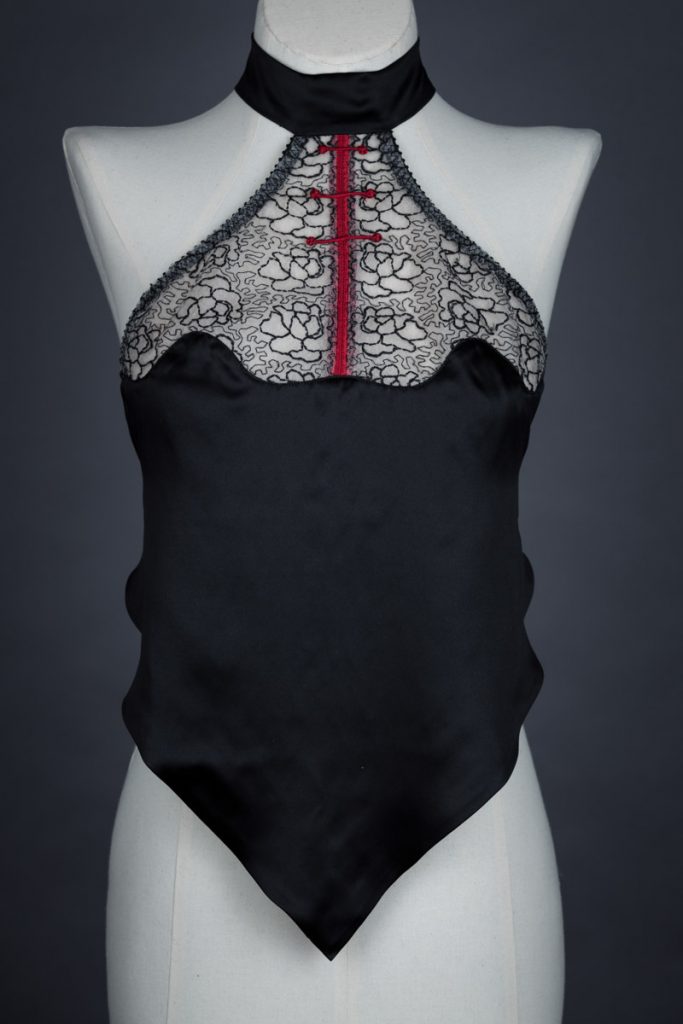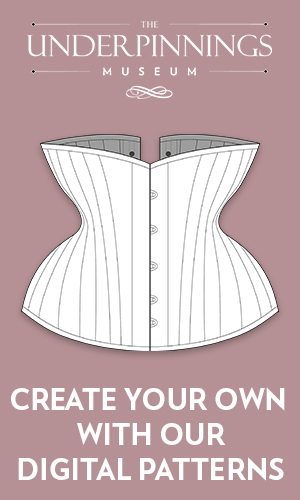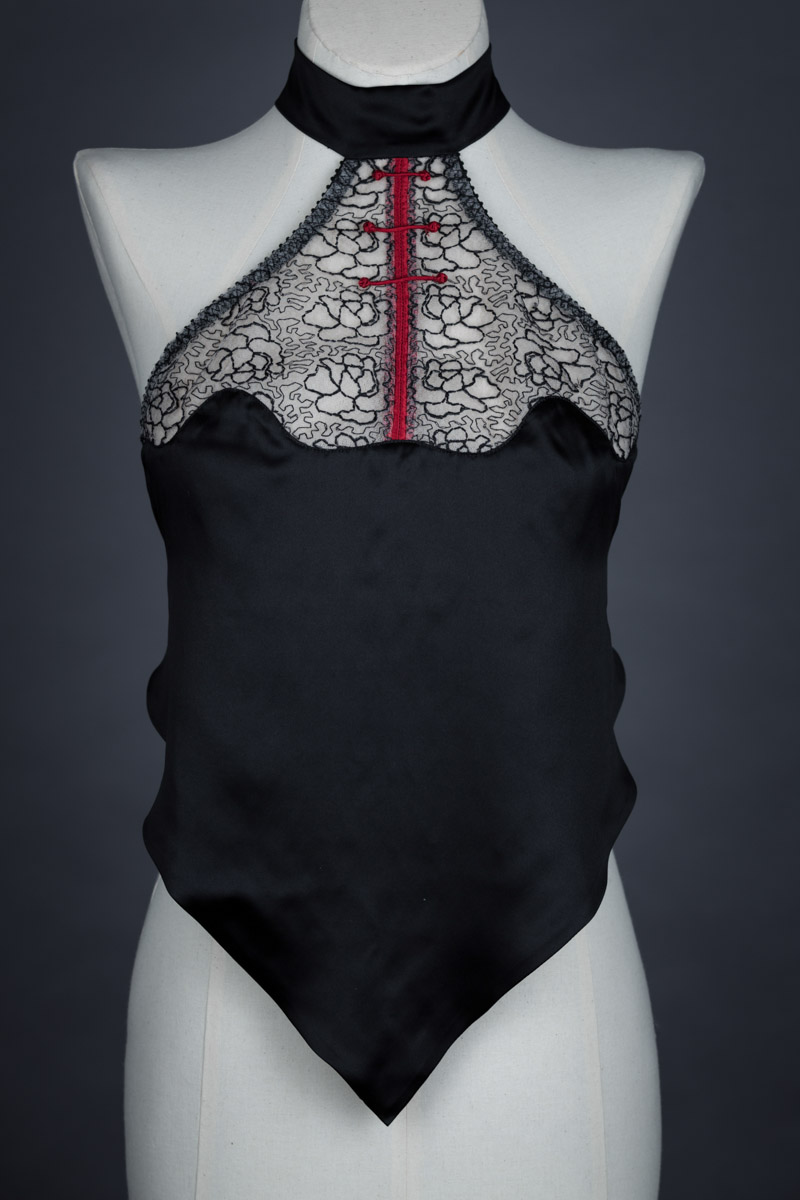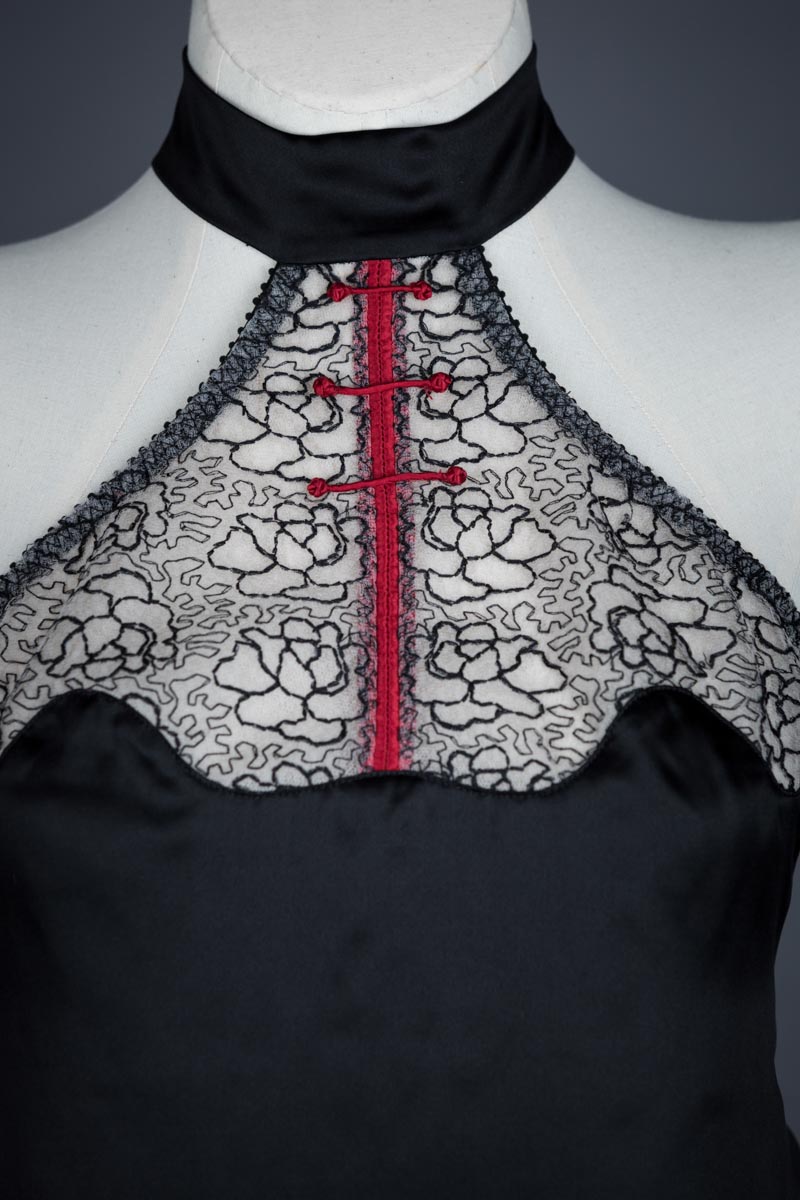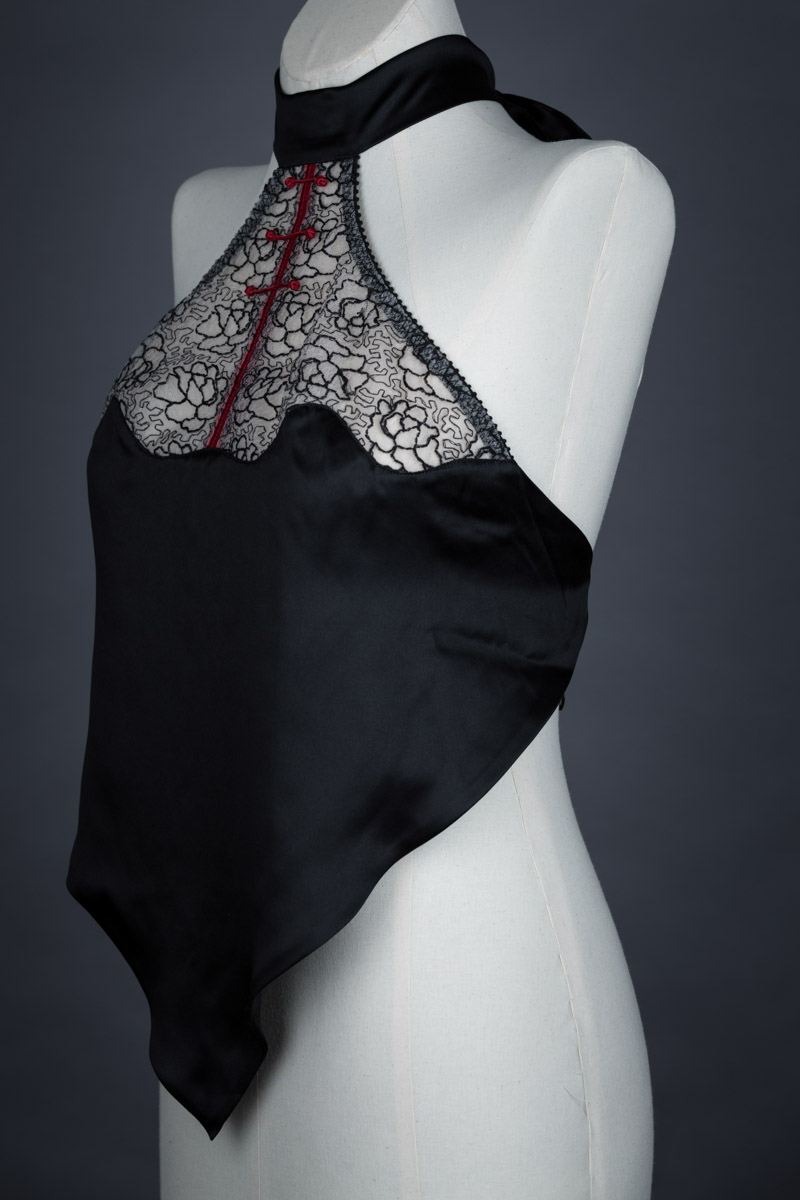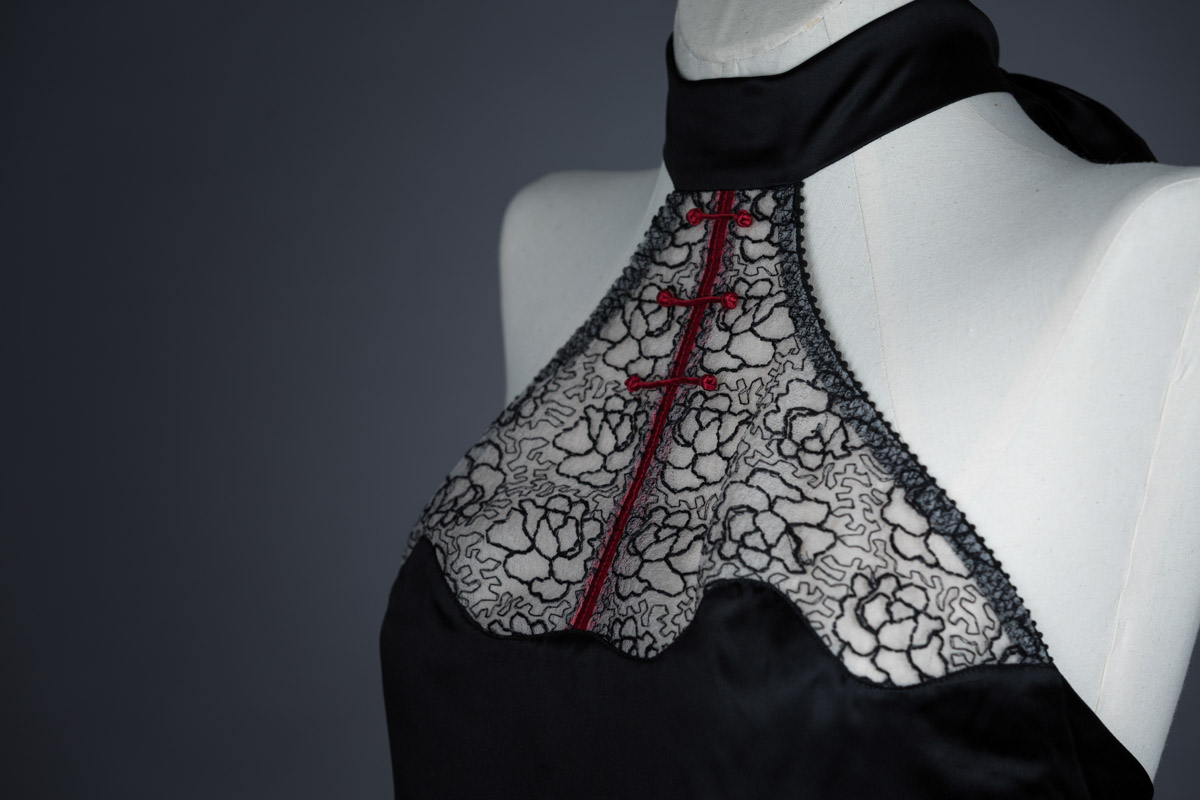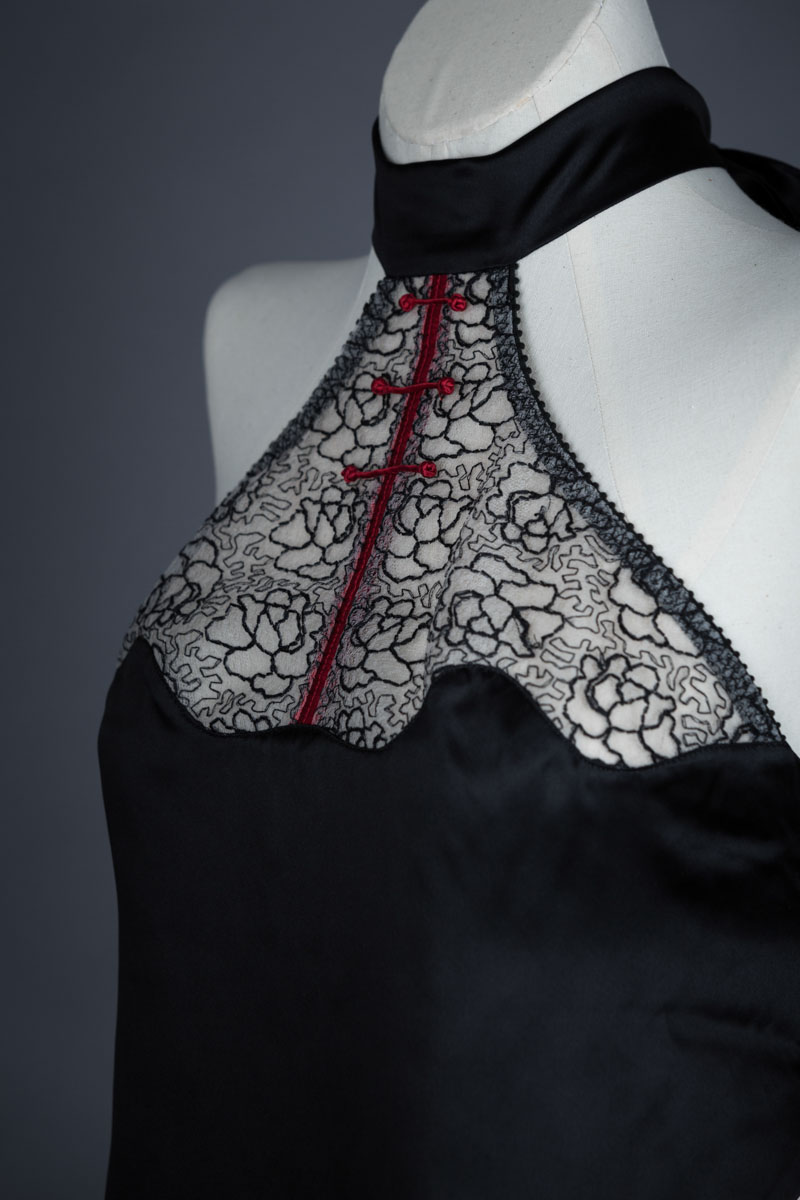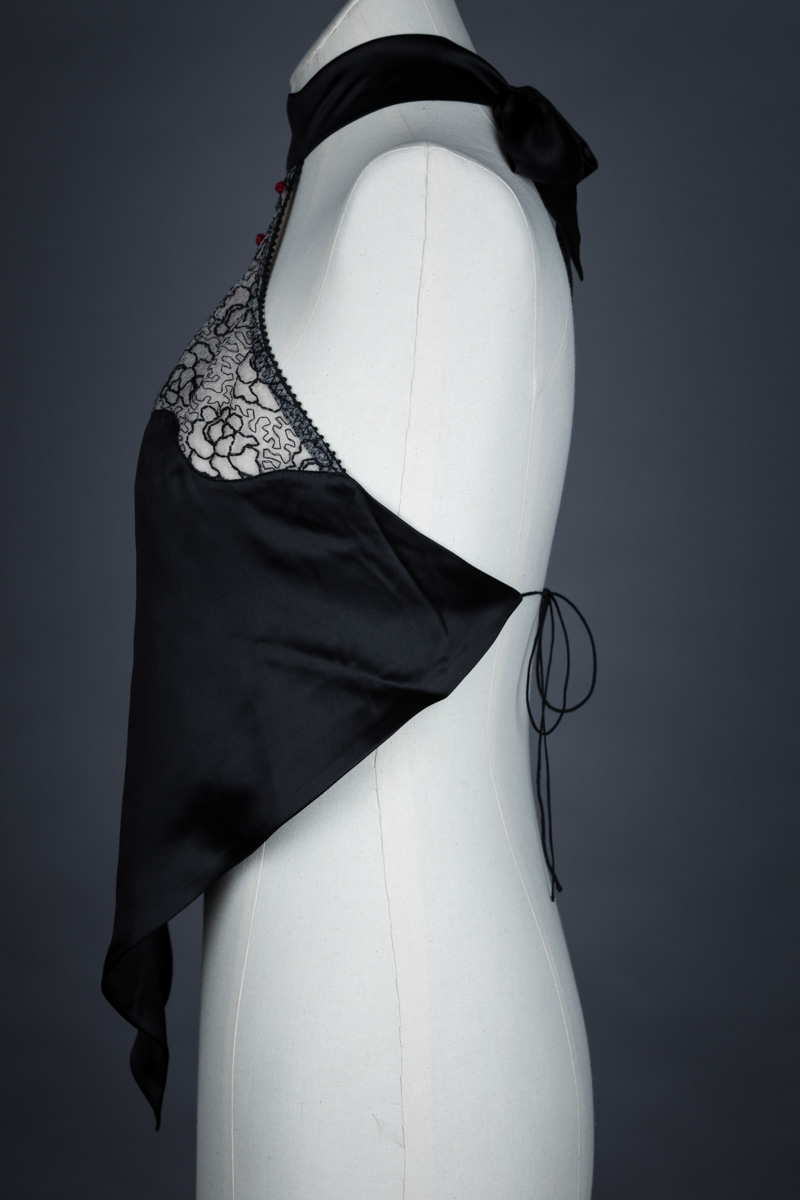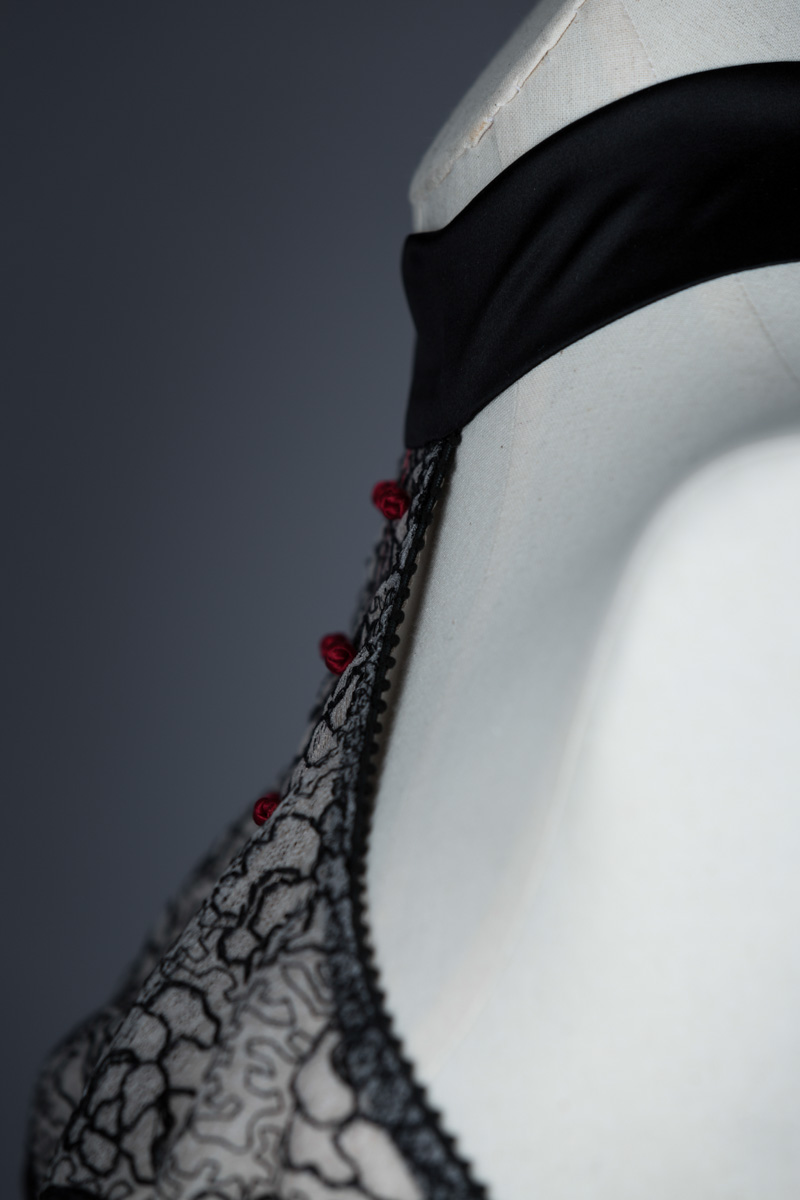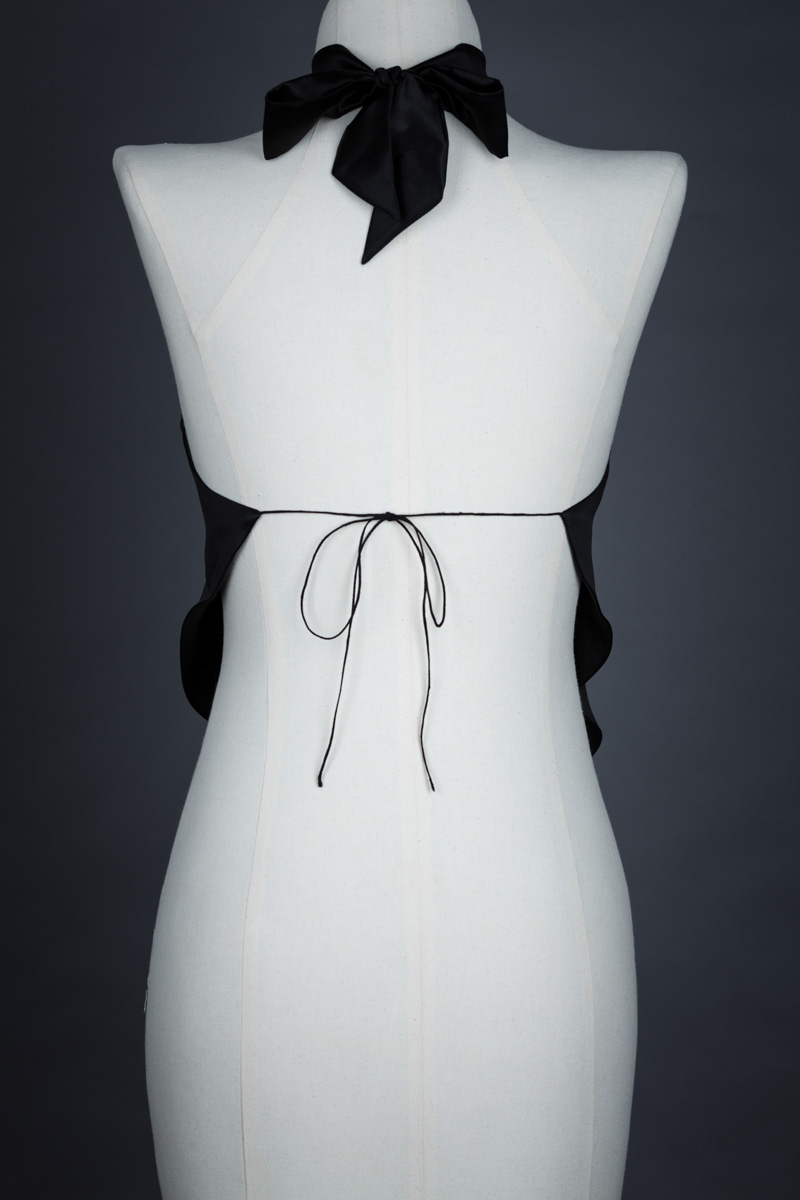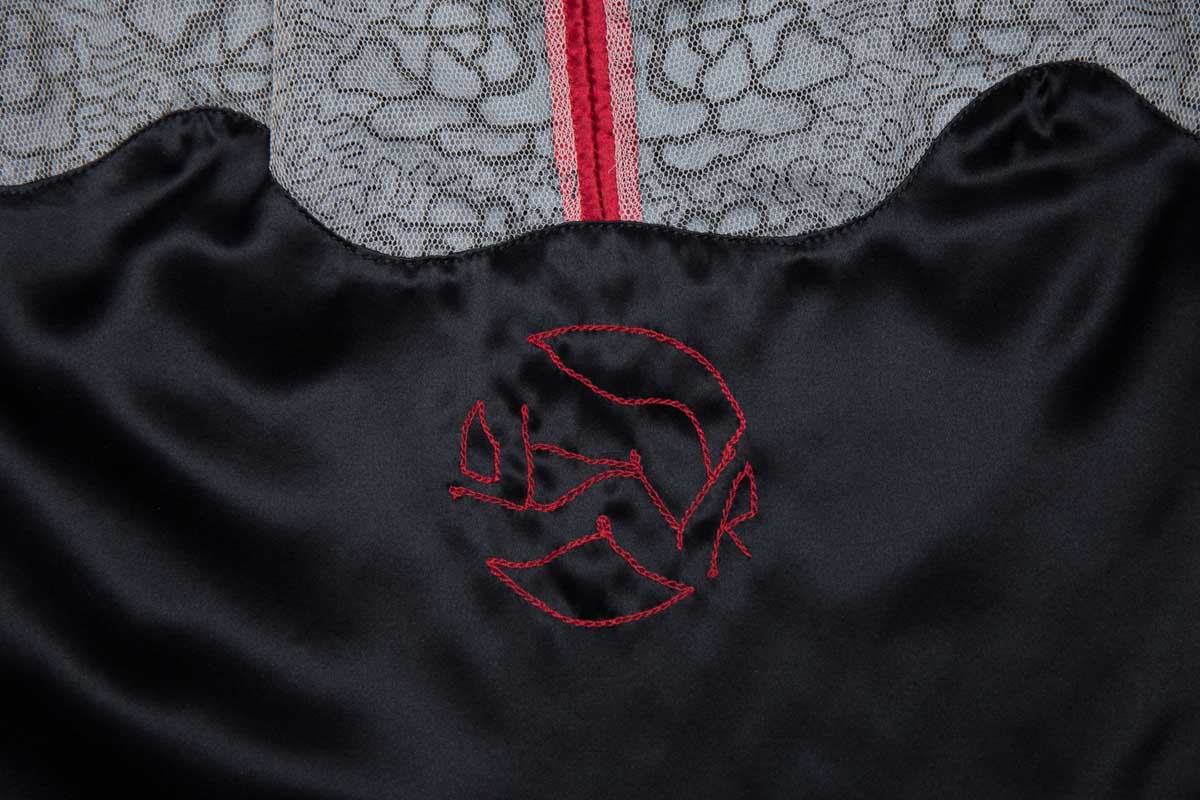Date: 2016
Origin: China
Fabric: Silk and embroidered tulle
Brand: Pillowbook
The dudou is a traditional Chinese lingerie style, a type of chemise with an exposed back. This modern interpretation is made to order using couture sewing techniques. All seams are enclosed within the garment. The top half of the dudou is comprised of an exterior fabric of floral-machine-embroidered sheer synthetic mesh, lined with a plain sheer mesh. The centre front seam features contrast red silk detailing with traditional Chinese silk rouleau knots. The underarm edges have an encased elastic for a more flexible fit. The bottom half of the garment is black silk, with hand finished encased seams. The garment fastens with wide silk ties at the neck and narrow silk chiffon strings at the centre back. The silk lining is hand embroidered with an erotic motif.
Pillowbook was founded in 2013 by designer Irene Lu, wanting to promote traditional Chinese lingerie and championing couture hand crafting. The brand name is taken from the illustrated erotic guides that were traditionally gifted to Chinese newlyweds, giving the brand’s roots of a design aesthetic that aims to ‘inspire [their] lovers to seduce, pleasure and empower’.
With thanks to Irene Lu:
The dudou is a garment with a rich history. Prior to Mao’s rise to power, it was traditional for girls to be taught to sew from an early age, with no access to education in areas such as politics, science or mathematics. Typically women were confined to the home for the care of family. Consequently, women would hone their skills in the arts, refining areas such as painting, singing and sewing. These skillsets became sources of pride, and women were valued by their art.
On her wedding day, a bride would take her best piece of embroidery, typically square in shape, and place it on her dowry box as it was carried in her wedding parade. This was to show her skills (and by association, value) to the entire community. After the wedding ceremony, she would take the square piece of embroidered fabric, cut off a corner and attach chains to create a dudou.
For women from wealthy families, the fabric was usually silk, and for the less fortunate, cotton. The cut corner of the fabric became the neckline fo the dudou, and the chain would to around the neckline and connect to the back. Wealthy women would use gold chain, where as poorer would use a strip of cotton.
From the collection of Karolina Laskowska
